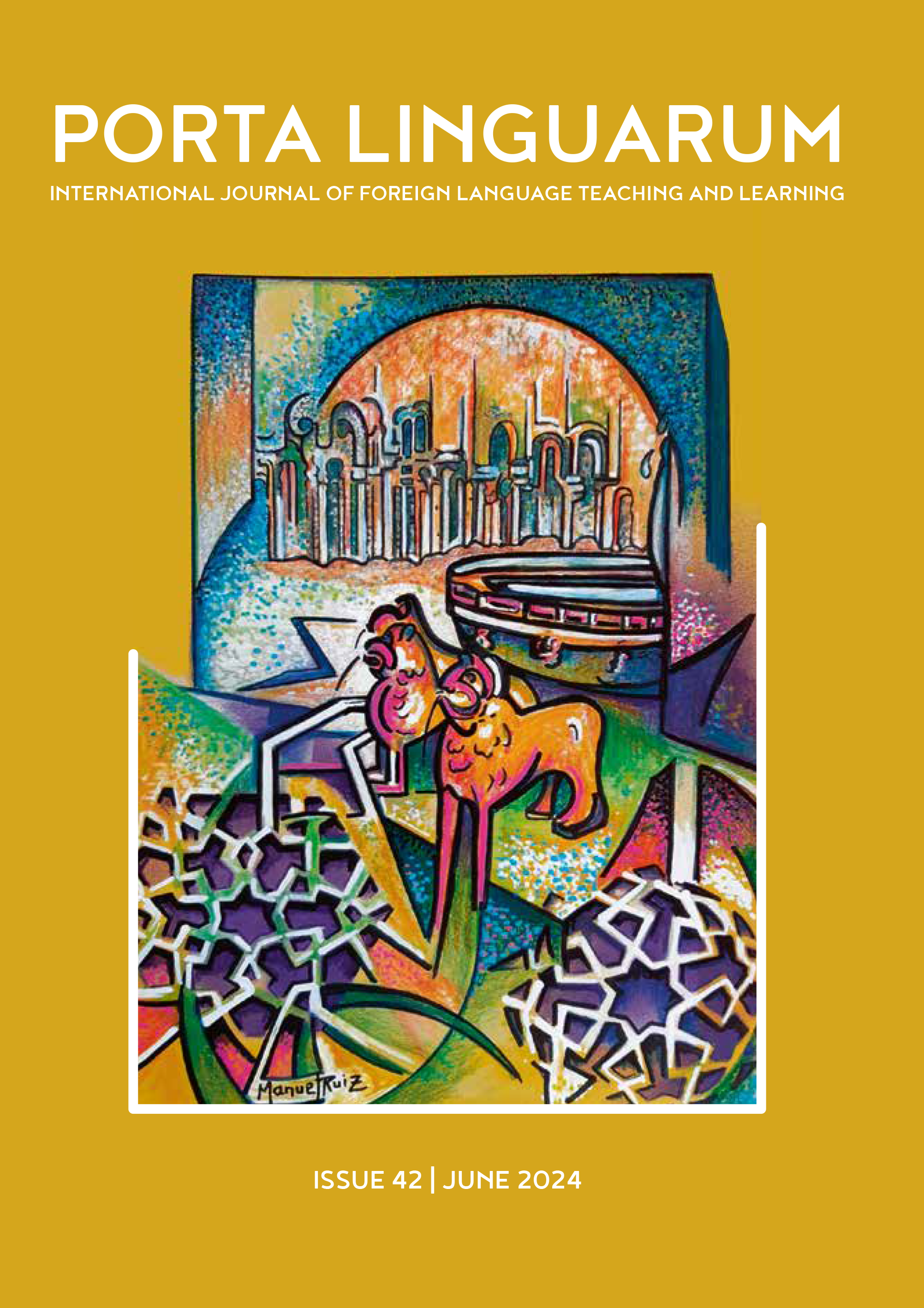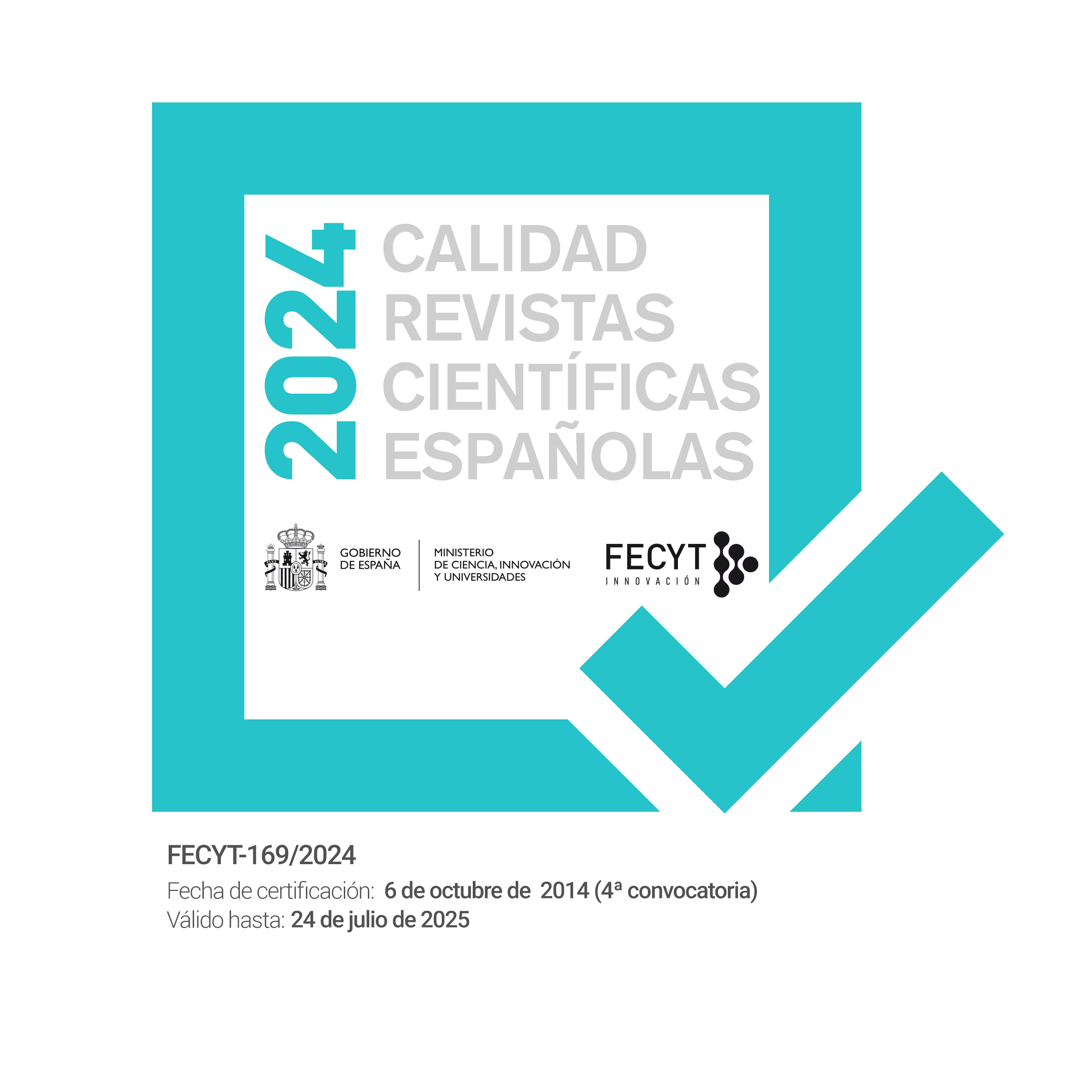In the future I will use corpora in my classroom: is it really applicable?
DOI:
https://doi.org/10.30827/portalin.vi42.27574Keywords:
corpora, teacher-training, implementation, lesson plans, pedagogical skillsAbstract
The aim of this study was to assess in-service teachers’ pedagogical skills that enable them to exploit corpora successfully in their daily teaching. The teachers attended an intensive training course and were then asked to submit end-of-course projects. The projects involved designing lesson plans based on the teaching contexts and implementing corpora into these plans according to their contexts. The project outcomes revealed that the submitted plans were preliminary and basic in terms of using corpus resources and activities. However, the teachers were genuinely keen to implement corpora into their daily teaching. The teachers applied corpora as an additional teaching methodology and in supplementary activities after explaining the learning units’ aims, periods, foci, and so on. They used corpora as hands-on supplementary sources of information, which was understandable for early application. The teachers seemed willing to implement corpora in their classrooms and needed no further training, but they might still need more guidance and feedback on the first-time application, which could lead to successful implementation.
Downloads
References
References
Ackerley, K. (2017). Effects of corpus-based instruction on phraseology in learner English. Language Learning & Technology, 21(3), 195–216.
Author. (in press). An Online training course on the use of corpora for teachers in public schools. The JALT CALL Journal.
Boulton, A., & Cobb, T. (2017). Corpus use in language learning: A meta-analysis. Language Learning, 67(2), 348–393. https:// doi.org/10.1111/lang.12224
Boulton, A. (2009). Data-driven learning: reasonable fears and rational reassurance. Indian Journal of Applied Linguistics, 35 (1), pp.81-106.
Boulton, A. (2017). Corpora in language teaching and learning. Language Teaching, 50(4), 483–506. https://doi.org/10.1017/ S0261444817000167
Boulton, A. (2010). Learning outcomes from corpus consultation. In M. Moreno Jaén, F. Serrano Valverde, & M. Calzada Pérez (Eds.), Exploring new paths in language pedagogy: Lexis and corpus-based language teaching (pp. 129–144). Equinox.
Boulton, A. (2011). Data-driven learning: The perpetual enigma. In S. Goźdź-Roszkowski (Ed.), Explorations across languages and corpora (pp. 563–580). Peter Lang.
Breyer, Y. (2009). Learning and teaching with corpora: Reflections by student teachers. Computer Assisted Language Learning, 22(2), 153–172. https://doi.org/10.1080/09588220902778328
Callies, M. (2016). Towards corpus literacy in foreign language teacher education: Using corpora to examine the variability of reporting verbs in English. In R. Kreyer, S. Schaub, & B. A. Güldenring (Eds.), Angewandte Linguistik in Schule und Hochschule [Applied linguistics in secondary school and at university] (pp. 391–415). Peter Lang.
Callies, M. (2019). Integrating corpus literacy into language teacher education: The case of learner corpora. In S. Götz, & J. Mukherjee (Eds.), Learner corpora and language teaching (pp. 245–263). John Benjamins.. https://doi.org/10. 1075/scl.92.12cal
Chambers, A. (2019). Towards the corpus revolution? Bridging the research–practice gap. Language Teaching, 52(4), 460–475. https://doi.org/10.1017/S0261444819000089
Chan, T. P., & Liou, H. C. (2005). Effects of web-based concordancing instruction on EFL students’ learning of verb-noun collocations. Computer Assisted Language Learning, 18(3), 231–251. https://doi.org/10.1080/09588220500185769
Chen, M., Flowerdew, J., & Anthony, L. (2019). Introducing in-service English language teachers to data-driven learning for academic writing. System, 87. https://doi.org/10.1016/j.system.2019.102148
Crosthwaite, P. (2020). Taking DDL online: Designing, implementing and evaluating a SPOC on data-driven learning for tertiary L2 writing. Australian Review of Applied Linguistics, 43(2), 169–195. https://doi.org/10.1075/aral.00031.cro
Ebrahimi, A., & Faghih, E. (2016). Integrating corpus linguistics into online language teacher education programs. ReCALL, 29(1), 120–135. https://doi.org/10.1017/S0958344016000070
Fang, L., Ma, Q., & Yan, J. (2021). The effectiveness of corpus-based training on collocation use in L2 writing for Chinese senior secondary school students. Journal of China Computer-Assisted Language Learning, 1(1), 80–109. https://doi.org/10.1515/ jccall-2021-2004
Farr, F. (2008). Evaluating the use of corpus-based instruction in a language teacher education context: Perspectives from the users. Language Awareness, 17(1), 25–43. https://doi.org/10.2167/la414.0
Flowerdew, L. (2011). Corpora and language education. Springer.
Heather, J., & Helt, M. (2012). Evaluating corpus literacy training for pre-service language teachers: Six case studies. Journal of Technology and Teacher Education, 20(4), 415–440.
Latif, M. M. M. A. (2021). Corpus literacy instruction in language teacher education: Investigating Arab EFL student teachers’ immediate beliefs and long-term practices. ReCALL, 33(1), 34–48. https://doi.org/10.1017/S0958344020000129
Lee, C. Y., & Liou, H. C. (2003). A study of using web concordancing or English vocabulary learning in a Taiwanese higher school context. English Teaching and Learning, 27(3), 35–56.
Leńko-Szymańska, A., & Boulton, A. (Eds.), (2015). Multiple affordances of language corpora for data-driven learning (pp. 1–14¬). John Benjamins. https://doi.org/10.1075/scl.69
Leńko-Szymańska, A. (2014). Is this enough? A qualitative evaluation of the effectiveness of a teacher-training course on the use of corpora in language education. ReCALL, 26(2), 260–278. https://doi.org/10.1017/S095834401400010X
Leńko-Szymańska, A. (2015). A teacher-training course on the use of corpora in language education: Perspectives of the students. In A. Turula, & B. Mikołajewska (Eds.), Insights into technology-enhanced language pedagogy (pp. 129–144). Peter Lang.
Leńko-Szymańska, A. (2017). Training teachers in data-driven learning: Tackling the challenge. Language Learning & Technology, 21(3), 217–241
Lin, M. H., & Lee, J.-Y. (2015). Data-driven learning: Changing the teaching of grammar in EFL classes. ELT Journal, 69(3), 264–274. https://doi.org/10.1093/elt/ccv010
Lin, M. H. (2019). Becoming a DDL teacher in English grammar classes: A pilot study. The Journal of Language Learning and Teaching, 9(1), 70–82.
Liu, D. (2011). Making grammar instruction more empowering: an exploratory case study of corpus use in the learning/teaching of grammar. Research in the Teaching of English, 45(4), 353–77.
Ma, Q., Chiu, M., Lin, S., & Mendoza, N. (2023). Teachers’ perceived corpus literacy and their intention to integrate corpora into classroom teaching: A survey study. ReCALL, 35(1), 19-39. doi:10.1017/S0958344022000180
Ma, Q., & Mei, F. (2021). Review of corpus tools for vocabulary teaching and learning. Journal of China Computer-Assisted Language Learning, 1(1), 177–190
Ma, Q., Tang, J., & Lin, S. (2021). The development of corpus-based language pedagogy for TESOL teachers: A two-step training approach facilitated by online collaboration. Computer Assisted Language Learning, 35(9), 2731–2760. https://doi.org/10.1080/09588221.2021.1895225
Ma, Q., Yuan, R., Cheung, L. M. E., & Yang, J. (2022). Teacher paths for developing corpus-based language pedagogy: A case study. Computer Assisted Language Learning, 1–32. https://doi.org/10.1080/09588221.2022.2040537
McEnery, T., & Xiao, R. (2011). What corpora can offer in language teaching and learning. In E. Hinkel (Ed.), Handbook of research in second language teaching and learning (Vol. 2) (pp. 364–380). Routledge.
Mukherjee, J. (2004). Bridging the gap between applied corpus linguistics and the reality of English language teaching in Germany. In U. Connor, & T. Upton (Eds.), Applied corpus linguistics: A multidimensional perspective (pp. 239–250). Rodopi. doi: 10.1163/9789004333772_014.
Mukherjee, J. (2006). Corpus linguistics and language pedagogy: The state of the art – and beyond. In S. Braun, K. Kohn, & J. Mukherjee (Eds.), Corpus technology and language pedagogy: New resources, new tools, new methods (pp. 5–24). Peter Lang,
Sinclair, J. (1991). Corpus, concordance, collocation. Oxford University Press.
Smart, J. (2014). The role of guided induction in paper-based data-driven learning. ReCALL, 26(2), 184–201. https://doi.org/10.1017/S0958344014000081
Vyatkina, N. (2016). Data-driven learning of collocations: Learner performance, proficiency, and perceptions. Language Learning & Technology, 20(3), 159–179.
Yoon, H., & Jo, J. W. (2014). Direct and indirect access to corpora: and exploratory case study comparing students’ error correction and learning strategy use in L2 writing. Language Learning & Technology, 18(1), 96–117.
Zareva, A. (2017). Incorporating corpus literacy skills into TESOL teacher training. ELT Journal, 71(1), 69–79. https://doi.org/ 10.1093/elt/ccw045
FUNDING INFORMATION
The author extends their appreciation to the Deanship of Scientific Research at Northern Border University, Arar, KSA for funding this research through the project number NBU-FFR-2024-458-01.



















